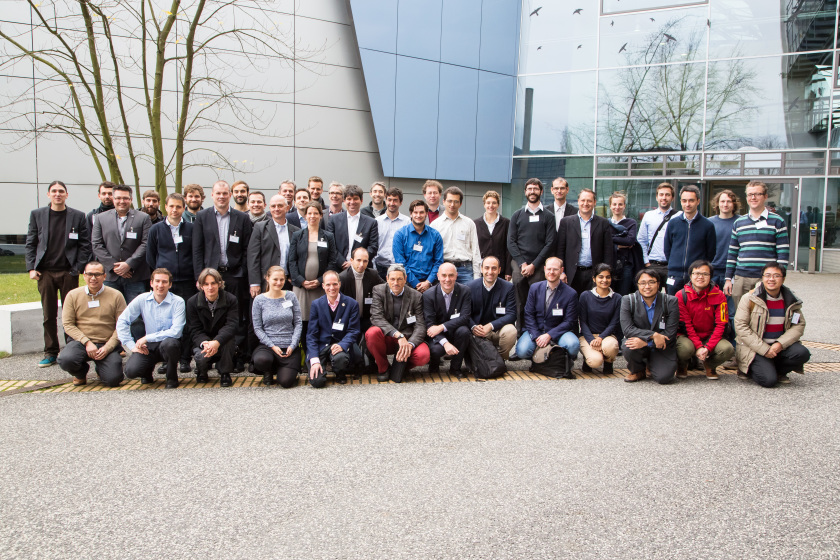European Workshop on Nanophotonics for Solar Energy

Participants of the European Workshop on Nanophotonics for Solar Energy. © HZB
On 25 and 26 November 2015, about 40 researchers from seven European countries visited Helmholtz-Zentrum Berlin to attend the “European Workshop on Nanophotonics for Solar Energy”.
On 25 and 26 November 2015, about 40 researchers from seven European countries visited Helmholtz-Zentrum Berlin to attend the “European Workshop on Nanophotonics for Solar Energy”.
During this workshop, current trends and developments in this field were discussed. Further, future opportunities and possibilities for collaboration were explored during discussions, which were initiated with a talk on funding within the European Commission Horizon 2020 program by Dr. David Kolman from the Brussels Office of the Helmholtz Association. The highlight of the workshop was the Distinguished Lecture by Prof. Thomas F. Krauss from the University of York (UK), in which he shared his vision on the future of Photovoltaics and informed us about the latest research results from his group.
This workshop was initiated and organized by Christiane Becker, Sven Burger and Klaus Jäger within the Berlin Joint Lab for Optical Simulations for Energy (BerOSE), which is a collaboration between Helmholtz-Zentrum Berlin, Zuse Institute Berlin and the Free University Berlin.
Klaus Jäger
https://www.helmholtz-berlin.de/pubbin/news_seite?nid=14387;sprache=en
- Copy link
-
Green hydrogen: MXenes shows talent as catalyst for oxygen evolution
The MXene class of materials has many talents. An international team led by HZB chemist Michelle Browne has now demonstrated that MXenes, properly functionalised, are excellent catalysts for the oxygen evolution reaction in electrolytic water splitting. They are more stable and efficient than the best metal oxide catalysts currently available. The team is now extensively characterising these MXene catalysts for water splitting at the Berlin X-ray source BESSY II and Soleil Synchrotron in France.
-
Green hydrogen: ‘Artificial leaf’ becomes better under pressure
Hydrogen can be produced via the electrolytic splitting of water. One option here is the use of photoelectrodes that convert sunlight into voltage for electrolysis in so called photoelectrochemical cells (PEC cells). A research team at HZB has now shown that the efficiency of PEC cells can be significantly increased under pressure.
-
Green hydrogen from direct seawater electrolysis- experts warn against hype
At first glance, the plan sounds compelling: invent and develop future electrolysers capable of producing hydrogen directly from unpurified seawater. But a closer look reveals that such direct seawater electrolysers would require years of high-end research. And what is more: DSE electrolyzers are not even necessary - a simple desalination process is sufficient to prepare seawater for conventional electrolyzers. In a commentary in Joule, international experts compare the costs and benefits of the different approaches and come to a clear recommendation.
